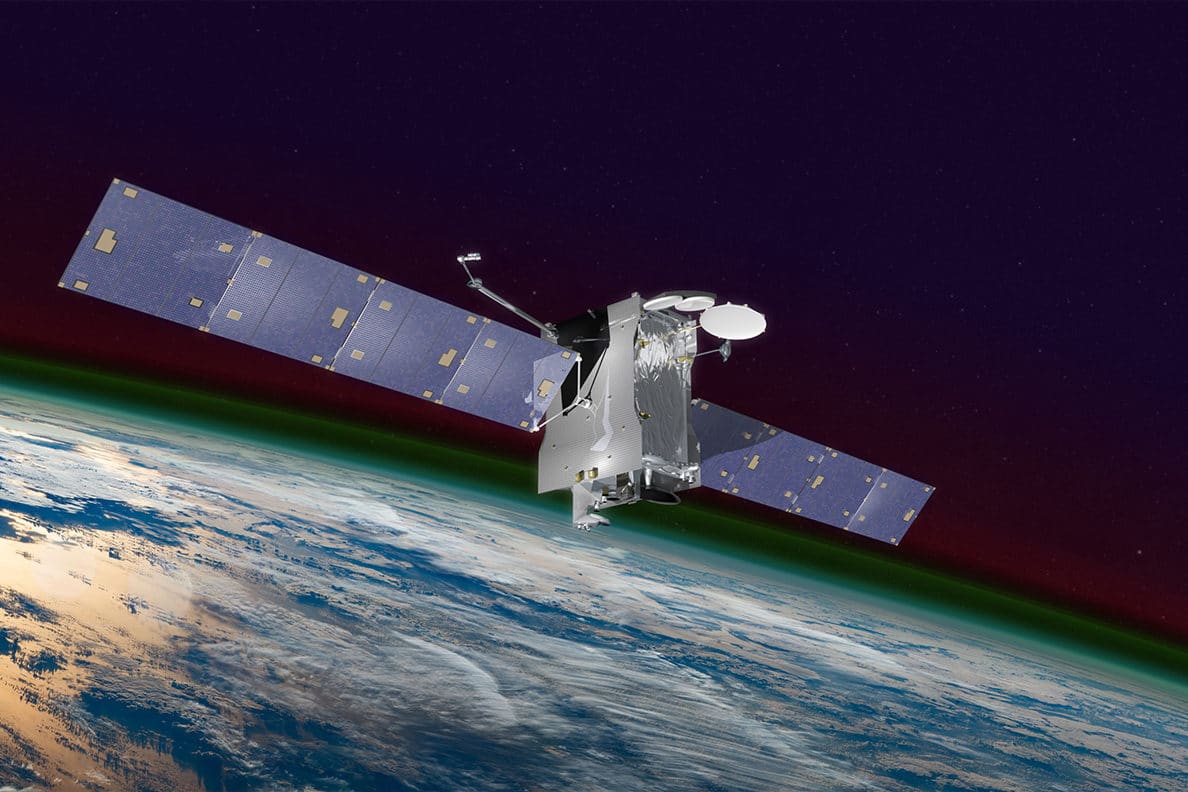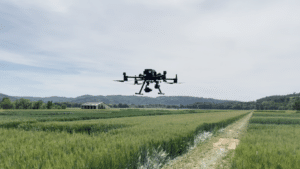A team of researchers at Washington State University is putting satellites and drones to work in the hunt for better wheat varieties to help feed a growing world more sustainably.
WSU scientists launched a new project this spring, developing techniques that let satellites and flying drones identify and study wheat varieties from overhead. The research is funded by a $500,000 grant from the U.S. Department of Agriculture’s National Institute of Food and Agriculture.
Their effort could speed up research into better, more productive wheat varieties and could give growers powerful new tools to improve farming.
Machines can sense crop traits faster
Grown on more acres than any other crop, wheat is a staple that feeds more than a third of the world’s population. To help meet growing global demand, and keep ahead of devastating pests, pathogens, and a changing environment, wheat breeders develop improved varieties.
An important part of that process is phenotyping: measuring the way plant genes are expressed physically, in order to select the best plants to breed for improved yield, grain quality, and resistance to stress and disease.
In the past, this work was done by hand. But with modern cameras and sensors, satellites could take phenotyping to a new level, helping scientists and growers quickly and accurately study how wheat varieties are performing in the field.
“Satellite imagery could help wheat breeders find genes that maximize yield and fight stress and disease, and help farmers learn which varieties grow best in their areas,” says lead scientist Zhiwu Zhang, the Washington Grain Commission Distinguished Professor for Statistical Genomics at WSU’s Department of Crop and Soil Sciences. “No one has been able to do this yet, but the rewards are highly worth the effort.”
While scientists can already learn a lot about crops from the wavelengths of light they emit — water stress, for example, shows up in the infrared region of the electromagnetic spectrum — part of the project’s challenge is to learn whether wheat varieties and their physical characteristics can be differentiated by their spectral data.
“Sensors are getting better every day,” says team member Sindhuja Sankaran, an associate professor and sensor technology researcher at WSU’s Department of Biological Systems Engineering. “As resolution increases and camera costs drop, we have more powerful tools to sense how crops are performing.”
To help satellite sensors understand what they are looking at, WSU researchers will use unmanned aerial vehicles, better known as drones, to gather visual and infrared imagery from wheat plots. Flying over WSU experimental farms across eastern Washington starting this summer, drone cameras will collect data to be matched to satellite imagery. Success in this matching process will give scientists the ability to identify and study wheat varieties from orbit.
Sensors could save time in the field
Arron Carter and Mike Pumphrey, winter and spring wheat breeders with WSU’s Department of Crop and Soil Sciences, are excited about the potential of overhead sensing to speed up the painstaking process of selection.
“In our breeding programs, time means everything,” Carter says.
Every year, he and Pumphrey plant several thousand experimental varieties of wheat. Each variety represents an investment of time and field capacity.
“If I can use a sensor on a drone or satellite to select only the best, and remove the rest a year early, I’ve increased my capacity and saved time that’s better spent on varieties that show more promise for Northwest farmers,” Carter says.
Beyond breeding, the team’s research could ultimately help growers around the world use satellite imagery to predict yields, monitor performance, and protect their crops from drought.
“Right now, we’re looking at Pacific Northwest wheat, but this could have implications across the globe,” Carter says. “Our imagination is the limit to what this technology could do.”
Other team members working on the project include postdoctoral researcher Yang Hu and graduate students James Chen, Chongyuan Zhang and Worasit Sangjan. Zhang also thanks CAHNRS’ Office of Research and Agricultural Research Center for assistance with the grant application.
Source: Washington State University













